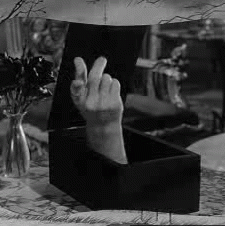monument Troosttuin Delft
Introduction.
A document is a written, drawn, presented or recorded representation of thoughts. Originating from the Latin Documentum meaning lesson - the verb 'doceo' means to teach. In the past it was usually used as a term for a written proof used as evidence. In the digital era, a document is usually used to describe a primarily textual file, along with its structure and design, such as fonts, colors and additional images. The modern term 'document' can no longer be defined by its transmission medium (such as paper) following the existence of electronic documents. 'Documentation' has more meanings than a written or drawn presentation of thoughts. The formal term 'document' is defined in Library, information and in documentation science, as a basic theoretical construct. It is everything which may be preserved or represented in order to serve as evidence for some purpose. The classical example provided by Suzanne Briet is an antelope: "An antelope running wild on the plains of Africa should not be considered a document, she rules. But if it were to be captured, taken to a zoo and made an object of study, it has been made into a document. It has become physical evidence being used by those who study it. Indeed, scholarly articles written about the antelope are secondary documents, since the antelope itself is the primary document." (Quoted from Buckland, 1998 ).
I used this year as a preparative research year. I started with looking at documents as such and investigated their behavior and properties. As the study progressed, I began to focus on three parallel directions.
- preserving the document
- the physical changed document
- and the non-physical changed document
How do we preserve documents? This is what I asked few people. The common answer was: on hard copies as in books and archives and/or on a digital medium. Most of them chose for both options just to be sure the document is save. By thinking about this answer more questions emerged: Are we scared of changes to documents? How do we handle documents and how do documents handle us? Can we consider ourselves as documents and how about our memories..are they documents too? Can documents be preserved otherwise than the traditional methods?
For as long as we know we document and we built enormous external archives. Starting with cave paintings in the prehistoric era we now save our views, emotions, events, thoughts, fantasies etc. increasingly on digital media. The documents in these archives are considered to be the carriers of facts which can be used as reference. Assuming the content of these documents don’t change, we have the possibility to combine knowledge to learn which can lead to other new documents. Though for we are not always aware, documents can change. I learned that there are several ways documents can or can be changed: - the physical change [ a document is being altered by transforming it from analogue to a digital form. though this must be investigated more: shouldn't we call a physical changed document a new document? ] - change of context. [ using a document in another context or vice versa] - change the perception of the user or viewer [ using perception management to reform peoples perception ] Looking at how and by whom or what a document is or can be changed, I looked into history and searched for altered documents. In history many documents have been changed using perception management. In some cases documents were even altered more than once. An important example is the Entartete Kunst exhibition from 1937 where the Nazis changed the perception of the people on the avant-garde, claiming it to be work of mad man. The powers of Perception management are still used however it has been fine tuned in such way that some times we are not conscious about the fact our perception on a document is changed. This refining of the perception management emerged in the cold war but was only described in the 90’s as the Soft Power Politics. Managing perception is a powerful tool which is used in various realms. It is highly used in advertising and marketing but it is also widely used as a military weapon known as propaganda. With this I want to present a chronological document consisting the interim results or models generated by my research so far.

